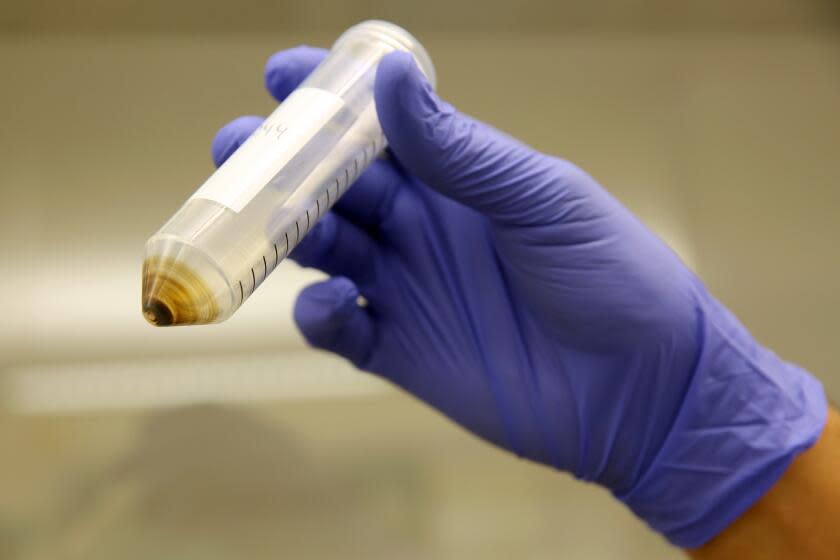Federal EPA limits toxic 'forever chemicals' in drinking water

The Environmental Protection Agency early Wednesday issued federal limits on dangerous “forever chemicals” in drinking water, which it believes will save thousands of lives and prevent serious illnesses including cancer.
The new rules require that water systems monitor for six toxic chemicals known as PFAS. The manmade chemicals, officially called per-and polyfluoroalkyl substances, are notoriously hard to destroy. They build up in the body and don’t break down in the environment.
If the tests find the chemicals at levels above the new federal standard, the water systems must notify the public and work to reduce them.
“There's no doubt that these chemicals have been important for certain industries and consumer uses,” EPA Administrator Michael S. Regan said in a call with journalists. “But there's also no doubt that many of these chemicals can be harmful to our health and our environment.”
Read more: Risk of tap water exposure to toxic PFAS chemicals higher in Southern California
The chemicals have been used since the 1940s to repel oil and water and resist heat. They've been included in thousands of consumer and industrial products including nonstick cookware, stain resistant clothing and firefighting foam.
Manufacturers began phasing out production of two PFAS chemicals, known as PFOA and PFOS, decades ago but they are still prevalent in the environment.
The EPA said “the science is clear” that exposure to the chemicals over a long period can cause cancer and other illnesses.
Scientists believe that children may be more sensitive to the chemicals' harmful effects because they are still developing.
The federal agency estimates that as many as 100 million Americans are using and drinking tap water contaminated with the chemicals.
In California, water systems have been required since 2019 to test for the chemicals in wells near landfills, airports, military bases and other sites known to be contaminated.
Dan Newton, assistant deputy director at the State Water Resources Control Board, said that 2,000 wells near those sites have been tested.
“We found so far that about 60% of those wells have detections of PFAS,” Newton said.
He said it was difficult to know what testing would find in wells that were not near sites known to be contaminated.
Tap water in urban areas of Southern and Central California appears more likely to be contaminated than drinking water in many other regions of the nation, according to a study last year by the U.S. Geological Survey.
Read more: 'This is taking too long': California community awaits cleanup of PFAS-contaminated wells
The new EPA rules set a maximum contaminant level for PFOA and PFOS of 4 parts per trillion. Four other chemicals are also subject to limits.
Water utilities have up to five years to comply with the new standards.
There are more than 14,000 PFAS chemicals.
David Andrews, senior scientist at the Environmental Working Group, said that although water systems must remove just six of those chemicals under the new rules, the treatments will lower the levels of other PFAS too.
“The filtration goes beyond just these chemicals and should be relatively effective for other PFAS chemicals as well as other contaminants,” he said.
The EPA proposed the new rules early last year. Since then, the agency received tens of thousands of comments, which it said it had considered before issuing its final decision.
For years, the chemical industry and the U.S. Department of Defense have fought proposals for a federal limit on PFAS in water.
The American Chemistry Council, an industry trade group, called the agency’s proposal “controversial and unscientific.”
Water systems also worry about the costs of testing and treating the water.
“What is clear is that meeting these new federal regulations will cost billions of dollars,” said Robert F. Powelson, president of the National Assn. of Water Cos. “It’s a cost that will disproportionately fall on water and wastewater customers in small communities and low-income families.
"The next step must now be to develop a system where the polluters are held responsible for the cleanup not our consumers.”
This story originally appeared in Los Angeles Times.

